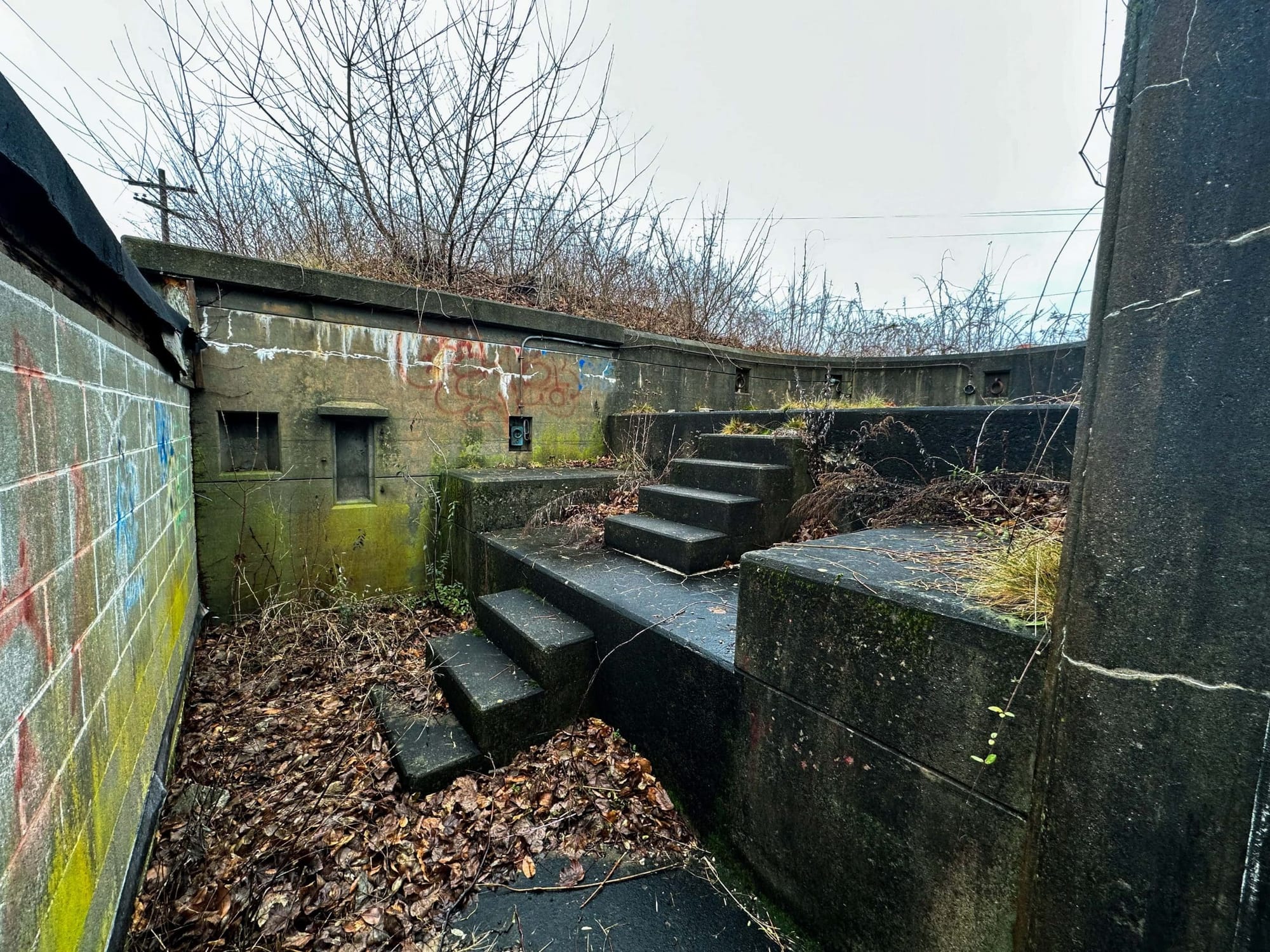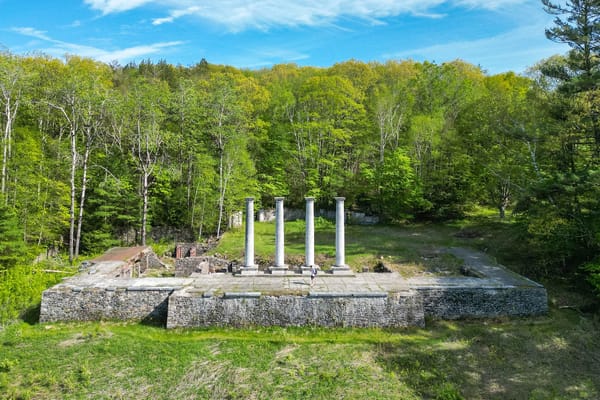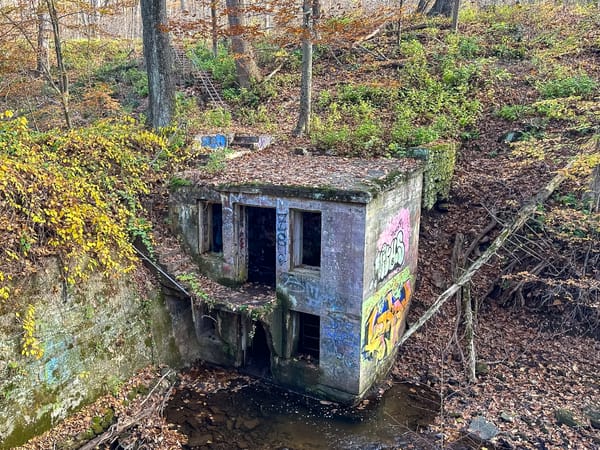Battery Armistead (Narragansett, RI)
Battery Armistead in Narragansett, Rhode Island, is a hidden Endicott-era coastal fort built on today’s URI Narragansett Bay Campus.

Hidden on the University of Rhode Island’s Narragansett Bay Campus, just south of Wickford, sits one of Rhode Island’s most overlooked historic sites — Battery Armistead. Once part of the Fort Kearny military reservation, this small coastal gun battery was built during the Endicott Period as part of the Harbor Defenses of Narragansett Bay.
Today, while the campus buzzes with marine science research, a quiet corner of it still holds the concrete remains of a fortification that once guarded Rhode Island’s shores.

The Origins of Battery Armistead
Battery Armistead was constructed between August 1904 and October 1906, during a time when the United States was investing heavily in new coastal defenses. The Endicott Board, established in the late 19th century, called for the modernization of America’s coastal fort system with reinforced concrete batteries and disappearing guns.
The project cost $16,600 to complete and was officially turned over to the U.S. Army Coast Artillery Corps on May 7, 1908, marking its operational debut as part of Fort Kearny.
The battery was named in honor of Captain Lewis G. A. Armistead, who was killed in action at Fort Erie, Upper Canada, in September 1814 during the War of 1812. The designation came through General Order No. 194, issued on December 27, 1904.

Design and Function
Battery Armistead was designed as a two-gun, two-story coastal defense battery, typical of its time. It housed:
- Two 3-inch M1903 guns, mounted on M1903 Barbette carriages
- A magazine and storage area on the lower level
- Gun platforms and observation positions above
The design was practical and compact — built to defend the western approach to Narragansett Bay from smaller vessels and fast-moving naval threats.
Unlike later batteries, it lacked mechanical hoists for ammunition; everything was moved by hand. Electricity was supplied by nearby Battery French, another component of Fort Kearny’s defense system.
From World War I to World War II
Battery Armistead remained in operation through the early 20th century, though it saw little action. During World War II, many of these older Endicott-era batteries were modified or stripped to supply newer installations.
In the early 1940s, Battery Armistead’s 3-inch guns were removed and relocated to Fort Varnum, also in Narragansett, as part of a wartime reorganization of coastal artillery.
By 1943, Battery Armistead was officially deactivated, ending its brief but notable military service.
Battery Armistead Today
Today, Battery Armistead sits quietly on the URI Narragansett Bay Campus, its concrete structure partially reclaimed by vegetation and time. While access to the exact remains is limited — since the site lies on an active university campus — curious visitors can still glimpse sections of the original fort and surrounding military earthworks from nearby paths.
Though small in scale compared to other Rhode Island forts like Fort Adams or Fort Getty, Battery Armistead holds deep historical value as part of the network that once protected Narragansett Bay from invasion.
Visiting the Site (Respectfully)
Because Fort Kearny is now the University of Rhode Island’s Bay Campus, public access is restricted to certain areas. However, visitors can still explore the surrounding campus grounds and coastal views along South Ferry Road and Bay Campus Drive.
Visitor Tips
- 📍 Location: URI Narragansett Bay Campus, Fort Kearny area, Narragansett, RI
- 🏗 Built: 1904–1906
- 💰 Cost: $16,600
- ⚙️ Armament: Two 3-inch M1903 guns on M1903 Barbette carriages
- ⚡ Power: Supplied by nearby Battery French
- ⛔ Deactivated: 1943
- ⚠️ Note: The site is on university property; access may be limited or restricted.
Why Battery Armistead Still Matters
Though small and easily overlooked, Battery Armistead captures a critical moment in American history — when coastal fortifications evolved from the grand masonry forts of the 1800s to the compact, reinforced concrete defenses of the modern age.
Standing near its remains today, it’s hard to imagine the days when soldiers stood watch over Narragansett Bay, but the battery’s enduring concrete frame still tells that story — one of innovation, defense, and the quiet passage of time.
Quick Facts
- 📍 Location: URI Narragansett Bay Campus (Fort Kearny), Narragansett, RI
- 🕰 Built: 1904–1906
- 💣 Armament: Two 3-inch M1903 guns
- ⚡ Powered by: Battery French
- ⛔ Status: Deactivated in 1943
- 🧭 Access: Limited; located on active university grounds
Final Thoughts
While Battery Armistead no longer guards Rhode Island’s shores, its story continues to resonate through the historic landscape of the URI Bay Campus. It’s a fascinating destination for local historians, coastal defense enthusiasts, or anyone curious about the lesser-known corners of Rhode Island’s military heritage.
GPS: 41.491806, -71.421222



